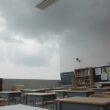Germany’s leading civil aid organizations are backing Interior Minister Alexander Dobrindt’s proposal to integrate crisis preparedness into the school curriculum, signaling a shift towards a more proactive national security posture. The move, spurred by a confluence of factors including increasingly volatile weather events, concerns over hybrid warfare attacks and a perceived need to bolster societal resilience, is facing broad endorsement from groups like the German Red Cross (DRK), Malteser Hilfsdienst, the Federal Agency for Technical Relief (THW) and the German Life Saving Society (DLRG).
Gerda Hasselfeldt, president of the DRK, emphasized the practicality of incorporating “a few hours of training per school year” potentially through project days, stating that such measures are “capable of saving lives in emergencies”. The focus, according to Hasselfeldt, should be on age-appropriate education regarding civil protection, encompassing a spectrum of potential threats ranging from extreme weather to attacks targeting vital infrastructure and even, in the most extreme scenario, armed conflict. This framing subtly links the preparedness initiative with a broader, evolving national security assessment.
Georg Khevenhüller, president of the Malteser Hilfsdienst, echoed this sentiment, arguing that a more pragmatic approach to addressing potential dangers is crucial. “We must confront reality at all levels” he stated, advocating for a normalization of safety training among young people. Khevenhüller’s suggestion that crisis preparedness and practical self-help should be as standard as first-aid courses raises questions about how deeply embedded this training will become and its potential impact on the school system’s existing priorities.
The THW’s President Sabine Lackner clarified that the initiative is not aimed at fostering panic, but rather at equipping young people with essential knowledge and the ability to act decisively in crisis situations. This reassurance is intended to address possible anxieties surrounding the introduction of potentially unsettling content into the educational environment. Lackner also linked the program directly to strengthening not only individual safety, but also the overall resilience of German society, a critical component of national stability increasingly emphasized by policymakers.
Even the DLRG, traditionally focused on aquatic safety, has voiced its support, suggesting targeted training on appropriate behavior during flood situations. This broader consensus across diverse aid organizations highlights the growing perception of risk and the need for a more comprehensive approach to national preparedness. However, critics may question the potential for diverting resources from core academic subjects and the possibility of overstating the likelihood of catastrophic events, while proponents argue the investment will serve a vital public benefit.





